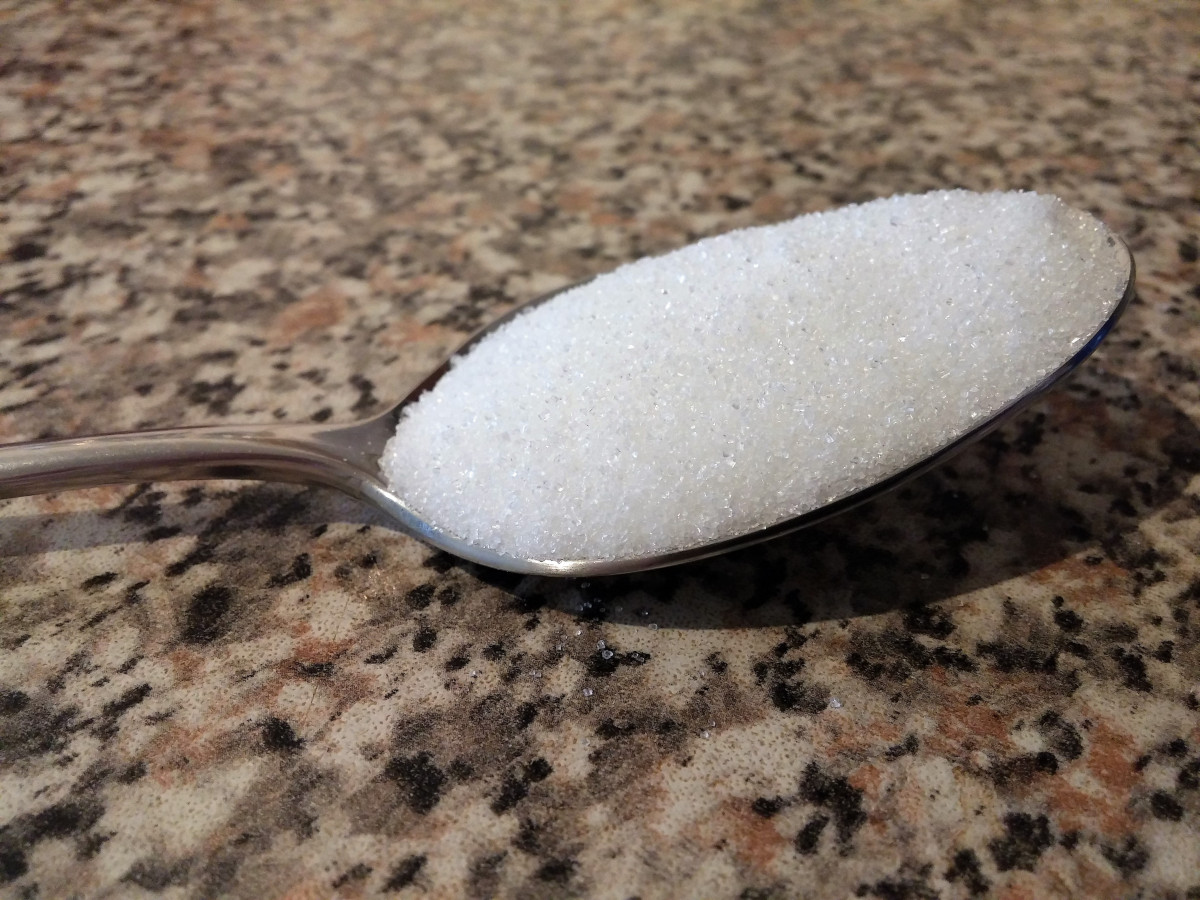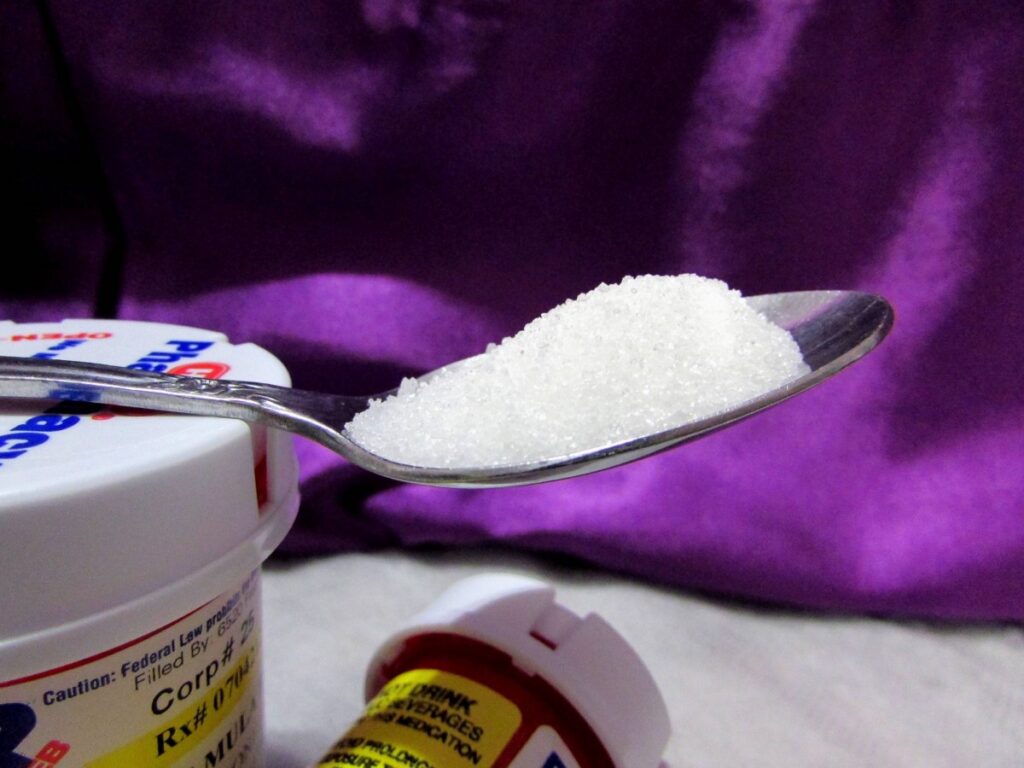Summary
Sugar and “good carbohydrates” for a diabetic
People with diabetes: which sugars to choose?
Today, no food is formally forbidden to diabetics, and the carbohydrate intake during meals can represent 50% of the overall energy intake.
However, even if it is not banned from their diet, sugar must be carefully selected and systematically consumed in moderation, in the same way as all foods with a high glycemic index. Let’s see closer below.
Sugar and “good carbohydrates” for diabetics
Sugar hides a multitude of carbohydrates, and not all carbohydrates are equal in terms of nutrition and blood sugar.
Much more than sugar consumption per se, today, nutritionists are interested in the glycemic index of foods in terms of diabetes.
The index or glycemic index makes it possible to classify foods according to the rise in blood sugar levels they cause when consumed. The highest index is that of glucose syrup, which is the maximum reference value (= 100).
Generally speaking, simple carbohydrates (simple sugars, such as table sugar) have a higher glycemic index than complex carbohydrates, such as those contained in cereals.
A glycemic index is now a vital tool for choosing the type and quantity of carbohydrates we ingest daily. In the case of diabetes, it is therefore recommended to:
Moderate, or even avoid, foods with a high glycemic index: all syrups, sweet foods, table sugar, sodas, mashed potatoes, French fries, white flour, white bread, pastries, starchy foods, puffed rice, etc. ;
Favor foods with a low glycemic index: wholegrain pasta and cereals, legumes, fruit, dried fruit, shellfish, etc.
The key is to choose the right carbohydrates, with low or moderate glycemic indexes, while favoring carbohydrate sources containing large quantities of micronutrients (vitamins, trace elements, minerals, enzymes, fibers).
Here are some examples of glycemic indexes:
White sugar = 70.
White bread = 85.
Mashed potatoes = 85.
White pasta = 55.
Potato chips = 80.
Cornflakes = 85.
Leeks = 15.
Good to know: the glycemic index of a food does not only take into account the nature of the food. Many other parameters influence it, such as the way it is prepared (pureed, sliced), the way it is cooked (al dente cooking for pasta and frying), or the combination with other foods.
People with diabetes: which sugars to choose?

For many people, sugar represents above all table sugar and all foods likely to give a sweet taste to dishes.
For diabetics, there are alternatives to table sugar or sucrose, even if sucrose is not theoretically forbidden in the case of diabetes. Instead, we use sugars that can moderate the rapid absorption of glucose into the bloodstream and therefore have less effect on blood sugar levels:
Fructose, the natural sugar of fruits: this sugar with a lower glycemic index than sucrose will be preferred by diabetics while consuming it in moderation. Indeed, fructose can increase blood levels of triglycerides (a category of fats) and promote metabolic syndrome (a combination of abdominal obesity, lipid and carbohydrate disorders).
Natural or synthetic sweeteners: the list of sweeteners is long: aspartame, xylitol, sorbitol, stevia, etc. It is advisable to consume them in moderation because they can cause side effects in excessive consumption (heart problems, laxative effects, etc.). Their consumption does not influence blood sugar levels but can avoid the frustration of not having enough sugar.
Good to know: other alternatives to table sugar are available today. Agave syrup is not the most appropriate sweetener for people with diabetes, as this naturally occurring product raises blood sugar levels. Coconut blossom syrup or coconut sugar is another product that gives a slightly sweet taste while providing interesting quantities of vitamins and minerals.
To summarize, we can remember that:
- it is important to choose the right time and the right amount to eat a sweetened food (it is better to consume small amounts of sugar regularly than to live in frustration and end up consuming a large part in one go);
- moderate consumption of sweetened foods in reasonable quantities is safe and can avoid certain frustrations and hyperglycemia;
- the glycemic index is a good way to balance your meals and ensure that you maintain a balanced diet in the case of type 1 or 2 diabetes.
Depending on the case of each diabetic, it is possible to consume more or less sugar each day. Some alternatives to sugar are also more suitable than others. In all cases, sugar consumption is important to discuss with the doctor, the diabetologist, or the dietitian.
Good to know: for a few years, research has shown that saffron extract would naturally help to fight against hyperglycemia (by modulating glucose levels) and to modulate blood glucose levels, as well as the inflammatory status in patients with type 2 diabetes.


